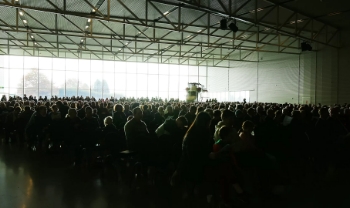No. 3 Squadron was involved in an epic struggle for life over the Pacific Ocean just four days after arriving on Guadalcanal in 1942.
Flying Officer George Gudsell was captain of a Hudson on patrol when he spotted a Japanese naval task force south of Vella Lavella Island (Solomon Is.). When he flew closer to get a clearer view he was dived on by three Japanese Zero fighters. In the combat that followed the gun turret was put out of action and the Hudson flew at near-sea level. Gudsell left his co-pilot, Flying Officer Roy McKechnie, to fly the aircraft while he guided the aircraft from the astro hatch – a viewing position in the top of the fuselage. After seventeen minutes of frantic flying to avoid the enemy fighters, the Hudson escaped and returned to base.
The watercolour painting, Hudson under attack by Squadron Leader John Barry, depicts the incident.


Gudsell was awarded the US Air Medal, the first member of the RNZAF to be decorated for gallantry in the Pacific Theatre of the War. Part of his citation reads ‘With superb airmanship and courageous leadership, he brought his plane through perilous action under fire against heavy odds to return to safety…’.





